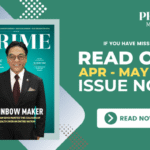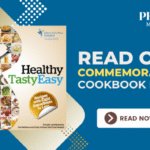Living with Incontinence: A Practical Handbook for Support and Daily Life
Introduction
Living with incontinence — whether urinary or bowel — is a challenge faced by millions worldwide. It can disrupt daily routines, reduce quality of life, and even affect emotional well-being. Beyond the physical symptoms, many people struggle with embarrassment, anxiety, and social withdrawal. This handbook on living with incontinence is designed to provide practical strategies, medical insights, and emotional support so that individuals and their families can navigate this journey with confidence and dignity.
Understanding Urinary and Bowel Incontinence
Urinary incontinence refers to the involuntary leakage of urine, while bowel incontinence is the inability to control bowel movements. Both conditions are more common than many realize, especially among older adults, but they can affect people of all ages. Understanding what causes incontinence — whether it is weakened muscles, neurological conditions, or side effects of medication — is the first step in effectively living with incontinence.
The Emotional Impact of Living with Incontinence
For many, the hardest part of living with incontinence is not the physical inconvenience but the emotional burden. Feelings of shame, loss of dignity, or fear of public accidents often lead to isolation. Anxiety and depression are also common. Recognizing these emotional challenges is vital, because support and reassurance are just as important as medical treatment. Talking openly with family members or joining support groups can help reduce stigma and promote resilience.
Practical Daily Tips for Living with Incontinence
Managing incontinence often involves small, practical changes that make a big difference:
-
Use protective products: Absorbent pads, underwear, or bed protectors.
-
Plan outings: Identify nearby restrooms and carry a small “go-bag” with essentials.
-
Establish routines: Regular bathroom breaks can reduce unexpected leaks.
-
Adapt your home: Night lights, easy-to-access toilets, and waterproof covers create peace of mind.
These steps empower people to continue daily activities without fear.
Healthy Habits That Support Incontinence Management
Healthy lifestyle choices can significantly improve quality of life while living with incontinence:
-
Hydration: Drink water consistently but limit caffeine and alcohol.
-
Balanced diet: Include fibre to prevent constipation.
-
Exercise: Pelvic floor exercises strengthen bladder and bowel control.
-
Weight management: Maintaining a healthy weight reduces pressure on the bladder.
-
Physical activity: Movement improves circulation, digestion, and overall confidence.
When to Seek Medical Help
Incontinence is not just “part of ageing.” Medical advice is essential for effective management. A doctor may recommend pelvic floor physiotherapy, medications, minimally invasive treatments, or surgery depending on the severity. Seeking professional help ensures that living with incontinence is manageable, not overwhelming.
Support for Families and Caregivers
Caregivers play a central role in supporting someone living with incontinence. Patience, empathy, and encouragement can make daily care less stressful. Offering reassurance, helping to plan bathroom routines, and maintaining dignity are all critical. Families should also care for themselves — caregiver burnout is real, and sharing responsibilities or joining caregiver networks can help.
Reclaiming Social Life and Confidence
Incontinence should not prevent individuals from enjoying life. With the right products, routines, and support, social participation is still possible. Whether it’s visiting friends, attending events, or enjoying hobbies, living with incontinence can still mean living well. Restoring confidence is about preparation and mindset — not limitation.
Conclusion
Living with incontinence is not the end of independence, dignity, or joy. With medical support, practical strategies, and compassionate communities, people can lead fulfilling lives despite this condition. This handbook is meant to guide, encourage, and reassure you that you are not alone. Share these insights with loved ones — together, we can reduce stigma and create a more supportive society. PRIME












Leave A Comment